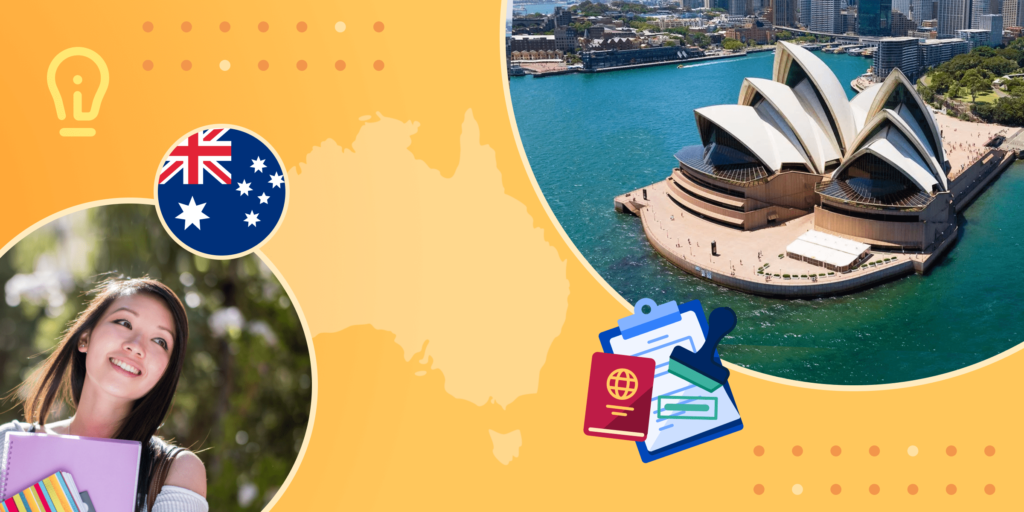Australia reopened its borders to fully vaccinated students in December 2021, and the latest student visa data shows positive results. From January to February 2022—the first two months since Australia reopened its borders—the number of lodged student visas increased by 61% compared to the same months in 2021.1 It’s early, but this suggests reinvigorated student interest in studying in Australia since the borders reopened.
Students choose to study in Australia to obtain a world-class education in a laid-back, high-quality, multicultural environment. In today’s ApplyInsights, we’ll dive into what the most recent data shows since Australian borders opened in December 2021. We’ll look at how the reopening has affected student visa grant volumes and rates, study levels, and source countries. Join us as we analyze what these changes mean for Australia’s international education market moving forward.
Key Insights at a Glance
- Nearly 66,000 students applied to Australia in January and February 2022, and over 51,000 student visas were granted.
- Offshore students were approved at a rate of 93% in 2021/22, a new high since 2007/08.
- China, India, and Nepal accounted for 51% of student visas granted in 2021/22.
Australian Student Visa Grant Volumes
Last year, the total number of student visas granted by Australia dropped 45% compared to the country’s peak in 2018/19. The chart below shows that this decline affected every study level, and continued into this year. You can highlight specific study levels by clicking on the legend.
For the 2021/22 academic year, Australia granted fewer than 80,000 total student visas from July to December. This was the worst start to an academic year since 2005/06.
However, since Australia reopened its borders, visa applications have flooded in. During January and February, nearly 66,000 students applied to Australia, and over 51,000 student visa applications were granted. 39% of all student visa applications lodged and approved during the first eight months of 2021/22 came in January and February. No other academic year over the past decade saw January and February comprise such a heavy percentage of applications during the first eight months.2
This is great news for the Australian education market, implying many international students were waiting for borders to reopen. We anticipate a booming second half of the 2021/22 academic year.
The number of student visas lodged and granted increased by more than 10% across every study level in January and February of 2021/22 compared to the same months the previous year.
Australian Student Visa Grant Rates
In the first eight months of 2021/22, the overall student visa approval rate surpassed 93%. This continued a 12-year streak in which the overall approval rate exceeded 90%.
The overall approval rate reached a record high in 2020/21. Onshore students helped buoy this record, accounting for a larger-than-normal percentage (64%) of all visa applications. It’s not surprising to see the overall approval rate fall slightly in 2021/22 compared to last year’s record high, particularly as the percentage of visa applications from onshore students has decreased to 45%. Yet, other than last year’s record, the approval rate in 2021/22 exceeded the approval rate in all other years since 2014/15.
The approval rate for higher ed, Australia’s most popular field of study, actually increased by 1% in 2021/22. ELICOS and VET fell by 10% and 8%, respectively, though VET’s 87% approval rate returns it to 2019/20 levels.
We covered how Australia’s international ed sector plans to recover earlier this year.
The approval rate for international students outside of Australia reached 93% in 2021/22, a 15-year high. However, just under 94% of international students already residing in Australia were approved in 2021/22. This was a significant drop from the near-100% approval rate last year and the nearly 96% approval rate the two years before that.
The table below shows the number of visas granted to onshore and offshore students:
Top Source Markets for Australian Institutions
Combined, China, India, and Nepal accounted for 51% of student visas granted in 2021/22. The chart below shows the top 10 source markets for student visas granted to Australia in the current academic year, emphasizing when the country opened up its borders:
For Thailand and Malaysia, more students were approved from January to February than in the first six months of the year. Nepal, Indonesia, and Singapore were just shy of an even split. And the remaining top 10 countries were granted at least half the number of student visas from January to February as July through December.
The sharp difference between the first six months of the year and when Australia opened its borders is nearly uniform. Pakistan, Brazil, and Colombia, the largest emerging markets for Australia, also demonstrated this trend. The uniform rise of visas granted (and, naturally, lodged) shows the pent-up demand for an Australian education that existed across the world during the last two years.
Seizing Momentum for a Bright Future
It’s still early, but recent student visa data shows Australia’s international education market gaining momentum since the country’s borders reopened. Visas lodged and granted are up, and we are optimistic that this trend will continue for the remainder of the 2021/22 academic year and into the next one.
With that said, much work remains for Australian institutions and governments to rebuild its international education market to pre-pandemic levels. Of particular concern is the country’s cross-sectoral pipeline. Pre-pandemic, many students would begin their studies in VET or ELICOS before transitioning to university. But over recent years, the VET and ELICOS sectors experienced some of the sharpest drops in visa grants and approval rates. Rebuilding these sectors will be vital for Australia.3
The ApplyInsights team is excited to continue monitoring the recovery of the Australian market. We plan to check-in on this data at the end of the 2021/22 academic year, and look forward to seeing how the second half of the year compares to others. ApplyBoard also has a wealth of resources for students interested in studying in Australia.
Published: March 29, 2022
Subscribe to ApplyInsights
Sign up for the latest insights on international education.

About the ApplyInsights Team
FOOTNOTES:
1. All data courtesy of the Australian Department of Home Affairs (ADHA). All data reported according to Australian governmental financial years, which span from July of one year to June of the next year (for example, July 2020 to June 2021 was the 2020/21 year). The data used for this article includes subclass 500 and subclass 570 to 576 visas granted to primary applicants only, and the latest data is for February 2022.
2. Prior to this year, January to February accounted for between 24% and 31% of all student visas lodged and granted over the first eight months of the last ten academic years.
3. ICEF Monitor, US and Australian enrolment trends point to longer-term impacts of pandemic. October 2021.



